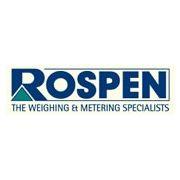 Add My Company
Add My Company
Sign In
Metering Screw Feeders
31-01-2008

The following points provide a detailed consideration relating to the design of metering feeders used in controlling the flow of powders into a process at a prescribed rate. This perspective is based on the 25 plus years of experience from Rospen Industries a leading UK company, synonymous with metering and loss in weight feeders.
Whatever means are employed to actually control the powder, certain basic fundamentals need to be assessed and understood before a solution can be arrived at.
Firstly, the terminology used to describe aspects of the equipment is universal and can be summarised as follows:
Diameter of Screw – This is the nominal outside diameter of the screw not the diameter of the tube in which it runs, nominal, because a 40 mm screw is in fact 38 mm diameter.; a 20 mm screw is 19 mm diameter etc. These differences only occur because the nearest available stainless steel tube schedule requires selection of these dimensions to give a proper running clearance.
Pitch of Screw – The dimension from leading face to the next leading face of the screw. In metering screw feeder terms the pitch dimension relates to the nominal screw diameter, applicable on screws up to 100 mm diameter. Above this size, the pitch will be smaller than the diameter but is still referred to as full pitch.
Box Loading – This refers to the level of material in the screw tube/casing and is usually quoted in % terms i.e. 50% etc. When box loading is related to the screw pitch then fractional terminology i.e.1/2, 1/3 is invariably used. For reference, Rospen apply 100% loading. However, for long feed applications the screw may require an expanding pitch to reduce the box loading in the tube.
Volumetric Feeding – Strictly based on a screw of a known diameter and pitch, metering powder at a specified speed. It must be noted that that any variation of material bulk density will have a direct effect on the ultimate feed rate.
Gravimetric or Loss-in-Weight – A feeder usually identical in design to the volumetric feeder but mounted to a weigh platform to measure the weight lost from the feeder at intervals of time. (A separate paper is available, which covers the design principles)
PRINCIPLES OF METERING SCREW FEEDING
These can be summed up as follows:
Correct filling of the screw – Otherwise known as entrainment. This process is enabled by the knowledge of the powder and critically, its handling characteristics, correct design of the storage hopper, and both the impact and necessity of flow aids.
Each powder has an ideal speed range through which it will not adversely react to the process of changing direction and filling the pitches of the screw. Invariably this is determined by trials and typically the conclusion is, that the higher the screw feed the greater the potential for capacity and linear accuracy tail off problems.
A typical hopper design usually incorporates the standard taper shape assisted by two or four blade agitators with intermittent or continuous running. For more difficult materials the tapered sided hopper is replaced with vertical walls to ensure a consistency of material flow to the screw. In extreme cases vibrator motors can be used.
With larger hoppers, above 150 litres and up to 0.5 m3 capacity it may be necessary to promote product flow by creating an unstable material bridge in the hopper by use of a vibrating discharge cone along with air evassers arranged asymmetrically in the hopper walls.
In the case of assisted flow by either the above or larger vibrating cone bin activators, care should be taken not to mis-match the output from the discharger and the screw by too great a factor. This can result in compaction, causing material, which cannot get away to compact in the feeder causing it to bore or tunnel a hole without conveying smoothly. The solution to this process is to scale down the problem by batching from large hopper or silos into
For more information on Metering Screw Feeders talk to Rospen Industries
Enquire Now
More News
List your company on FindTheNeedle.
